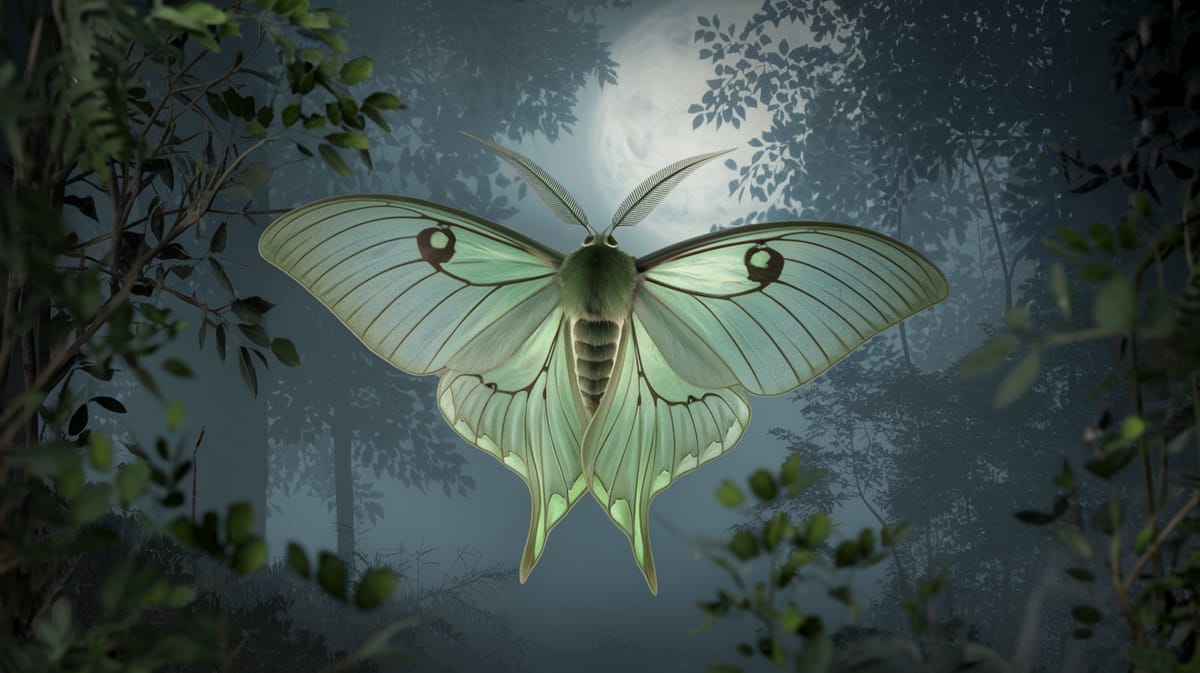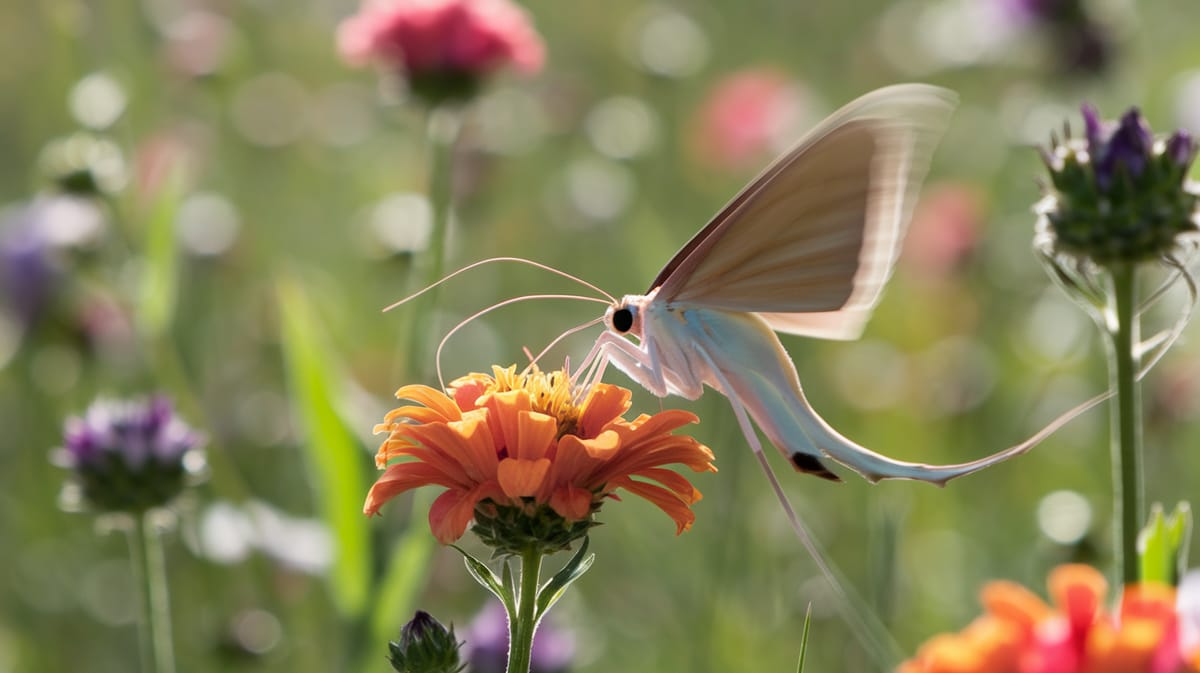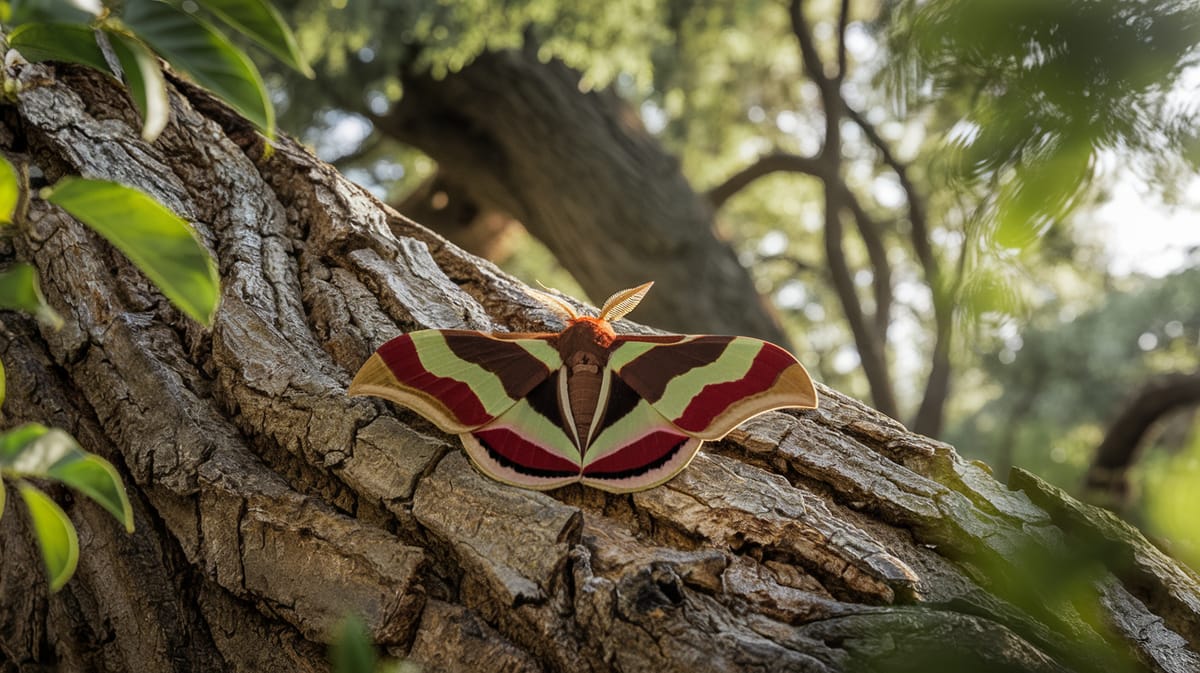Moth
Masters of nocturnal flight, moths display vibrant patterns and vital ecological roles, serving as pollinators and a crucial food source for many creatures. Their astonishing mimicry capabilities ensure their survival amidst predators.

Key Insights at a Glance
Did You Know?
Taxonomy & Classification
Moths boast intricate wing patterns and nocturnal behaviors, reflecting their evolutionary adaptations for camouflage and pollination. Let's understand the evolutionary journey and classification of these remarkable decomposers.
Global Diversity
Moths comprise over 160,000 species worldwide, showcasing immense diversity in coloration and habitat adaptation.
Evolutionary Adaptations
Originating over 190 million years ago, moths have survived major extinction events, evolving specialized traits like acoustic camouflage against predators.
Lifecycle and Growth
A remarkable journey of transformation from Egg to Adult.
Egg
Moth eggs are laid on host plants, serving as a nutrient-rich starting point for developing larvae.
Larva
Larvae, commonly known as caterpillars, voraciously consume plant material, growing rapidly through several molts.
Pupa
Encased in a cocoon, the pupa undergoes metamorphosis, restructuring into its adult form.
Adult
Adult moths emerge with fully developed wings, focusing on reproduction and pollination before their lifecycle concludes.
Dietary Habits
A delicate feeder with a unique proboscis, this insect primarily consumes plant nectar, adapting to diverse floral sources.
| DIET TYPE | DESCRIPTION |
|---|---|
| Primary Diet | Relies heavily on nectar from various flowering plants, utilizing its long proboscis to reach deep blossoms. |
| Secondary Diet | Occasionally consumes tree sap, fruits, and honeydew from aphids when nectar sources are limited. |
| Occasional | Rarely feeds on minerals from mud puddles or animal droppings, seeking essential nutrients in scarce conditions. |

Behaviour and Adaptations
Discover the fascinating adaptations that allow moths to thrive in diverse environments.
Nocturnal Navigation
Moths use the moon and stars to navigate at night.
Camouflage
Their wing patterns blend with surroundings to evade predators.
Pheromone Communication
Moths release pheromones to attract mates across distances.
Ecosystem Impact
Moths play vital roles in ecological balance and sustainability.
Nocturnal Pollinators
Moths pollinate a variety of night-blooming plants, aiding in plant reproduction.
Food Source
Moths serve as a critical food source for birds, bats, and other predators.
Nutrient Cyclers
Moth larvae decompose organic matter, enriching soil nutrient content.
Conservation Challenges
Understanding and addressing the major threats to moth populations.
Habitat Loss
Deforestation and urbanization drastically reduce moth habitats.
Pesticide Use
Widespread pesticide applications harm moth populations and ecosystems.
Climate Change
Altered climate patterns disrupt moth breeding and migration.
Frequently Asked Questions
How long do moths live?
Moths typically live for a few weeks to several months, depending on the species. Some, like the adult Luna moth, live only about a week, while others may survive through a season. Their lifespan includes the egg, larval, pupal, and adult stages.
What do moths eat?
Moth larvae, known as caterpillars, primarily feed on leaves, fruits, and flowers. Adult moths often feed on nectar, sap, or do not eat at all, relying on fat reserves built during their larval stage.
Are moths poisonous?
Most moths are not poisonous to humans. However, some caterpillar species have spines or hairs that can cause irritation or allergic reactions when touched. It's best to avoid handling unfamiliar caterpillars.
Are moths endangered?
While many moth species thrive, some are at risk due to habitat loss, pollution, and climate change. Conservation efforts focus on preserving their natural habitats to prevent the decline of vulnerable species.
What do moths symbolize?
Moths often symbolize transformation, vulnerability, and attraction to light. In various cultures, they are seen as omens of change or messengers from the spirit world, representing the soul's journey.
Do moths bite?
Moths do not bite humans. Their mouthparts are adapted for sipping nectar or are non-functional in adult moths that do not feed. Some caterpillars may have defensive mechanisms, but these are not considered bites.
What color are moths?
Moths display a wide range of colors, from dull browns and greys for camouflage to vibrant hues like pink, green, and blue. Their coloration often depends on their habitat and the need for protection from predators.
Does a moth have wings?
Yes, moths have wings. They are typically covered in tiny scales that give them their color and patterns. The wings are crucial for flight and mating displays, and their size and shape vary among species.
What does a moth look like?
Moths generally have a robust body, feathery or thread-like antennae, and scaled wings. They vary in size and color, exhibiting patterns that can be plain or intricate. Unlike butterflies, moths often hold their wings flat when at rest.
Is a moth an insect?
Yes, a moth is an insect. It belongs to the order Lepidoptera, which also includes butterflies. Insects are characterized by having a segmented body, exoskeleton, and three pairs of legs, features that moths possess.
Related Insects
Discover insects with similar characteristics to Moth - including shared habitats, diets, and taxonomic classifications
Share this profile
Help others discover Moth
